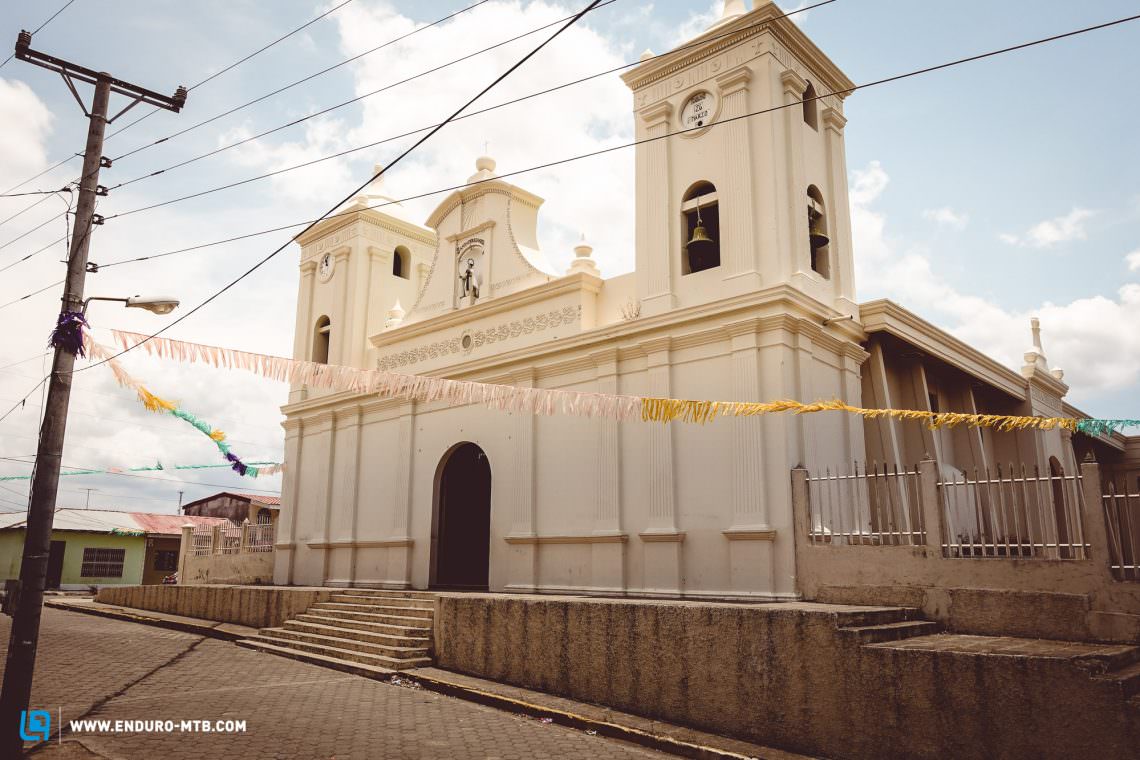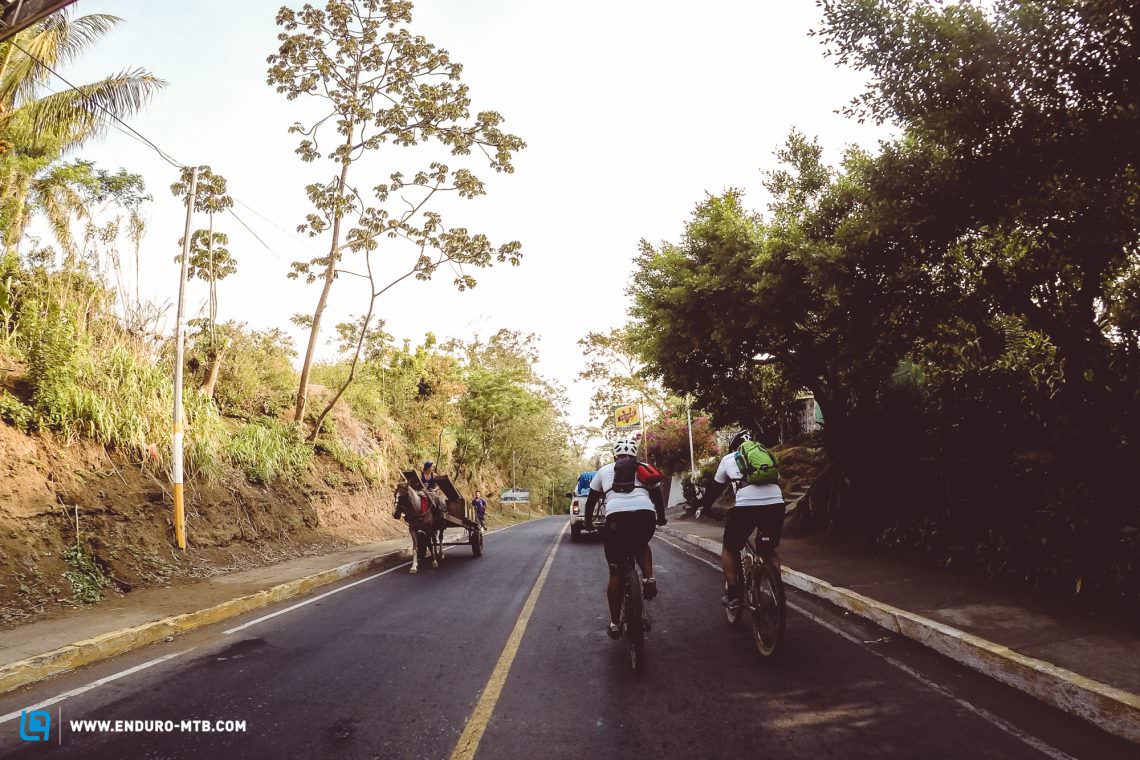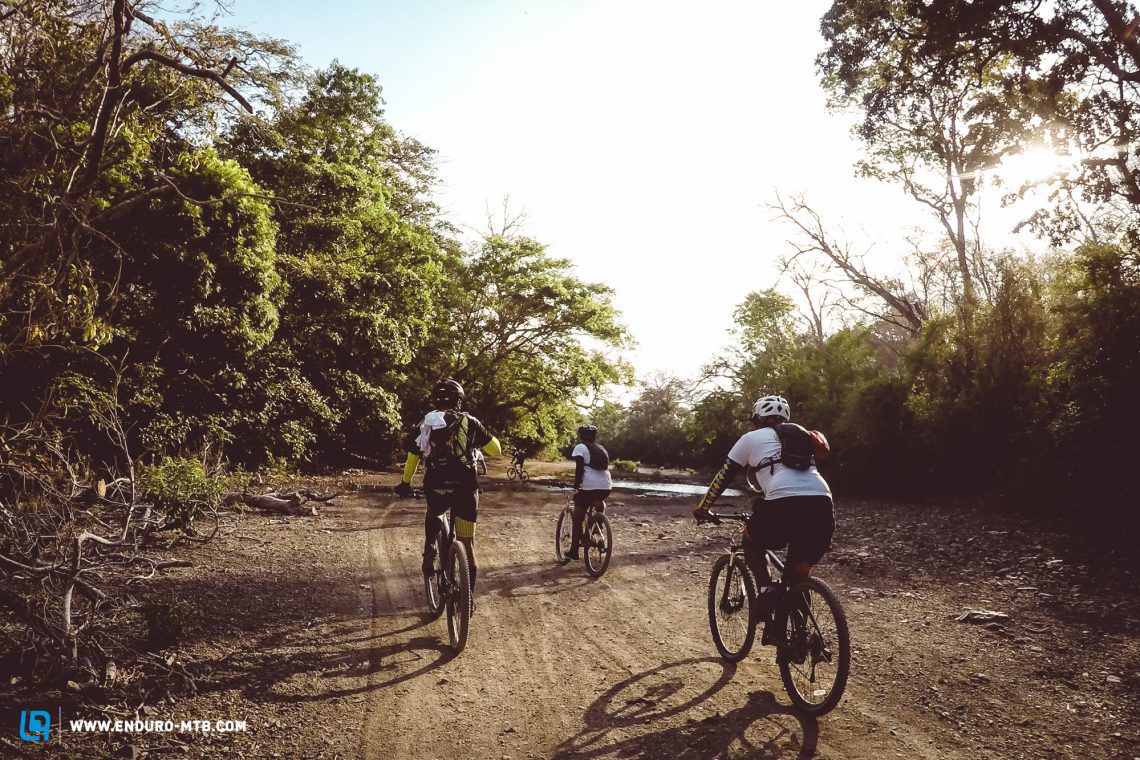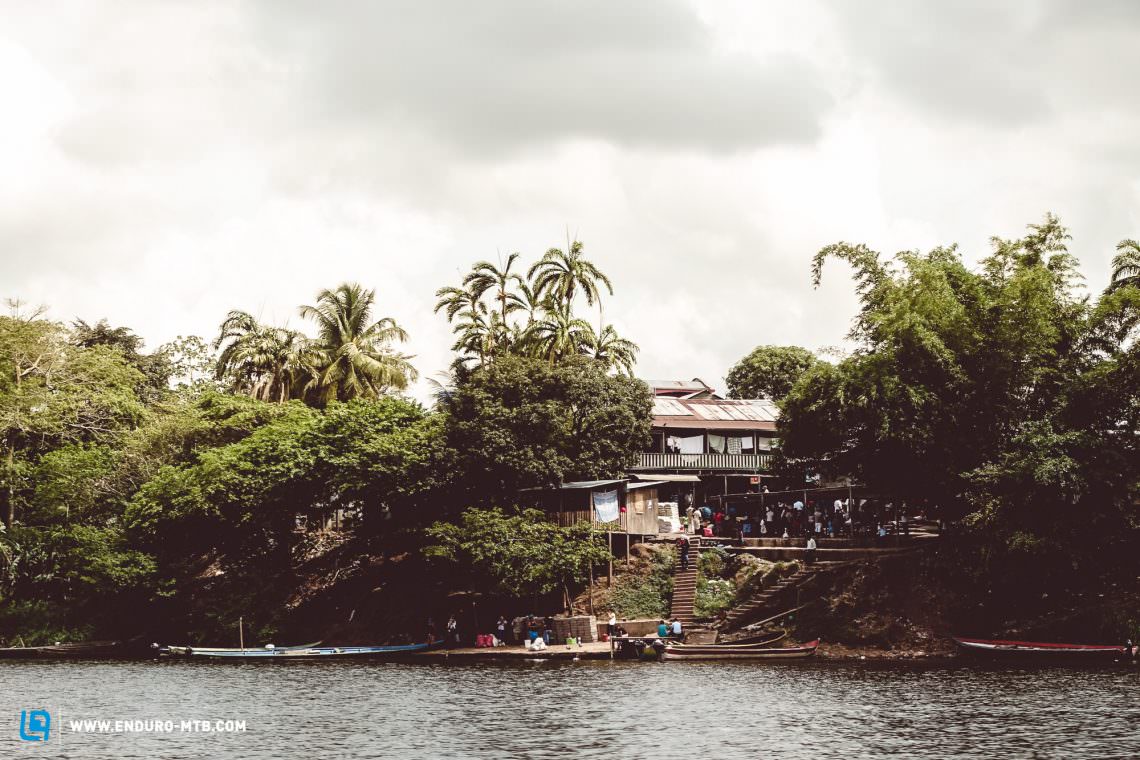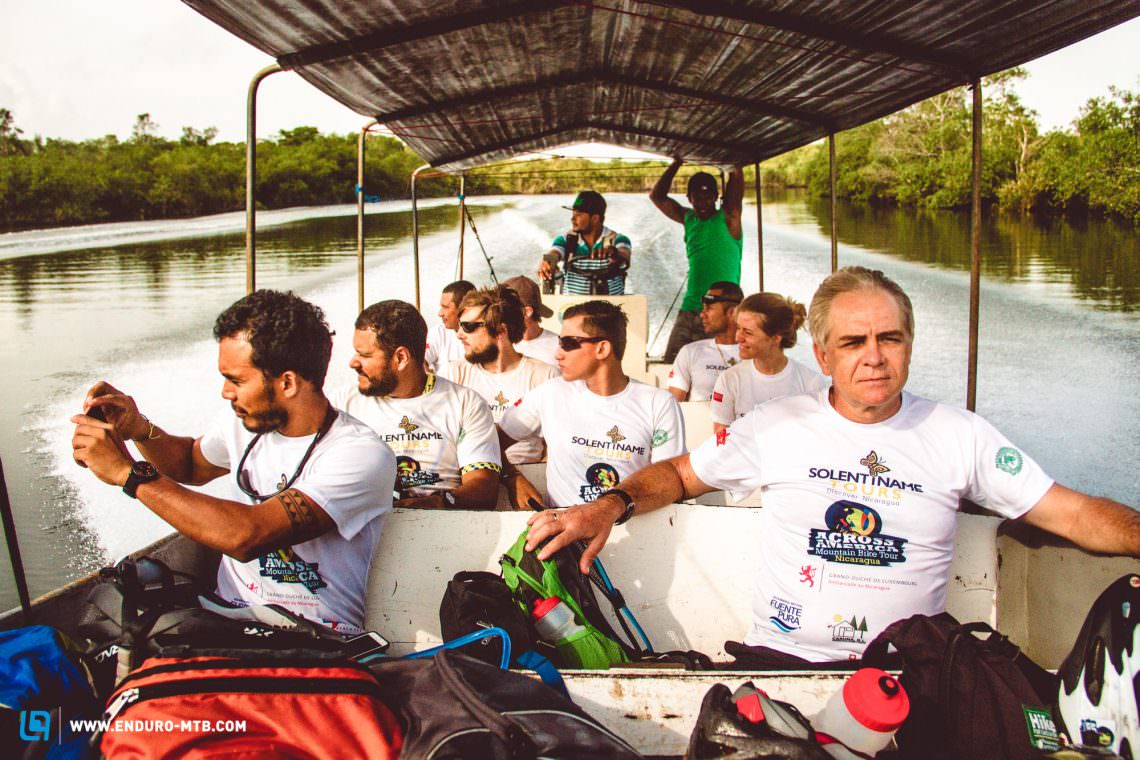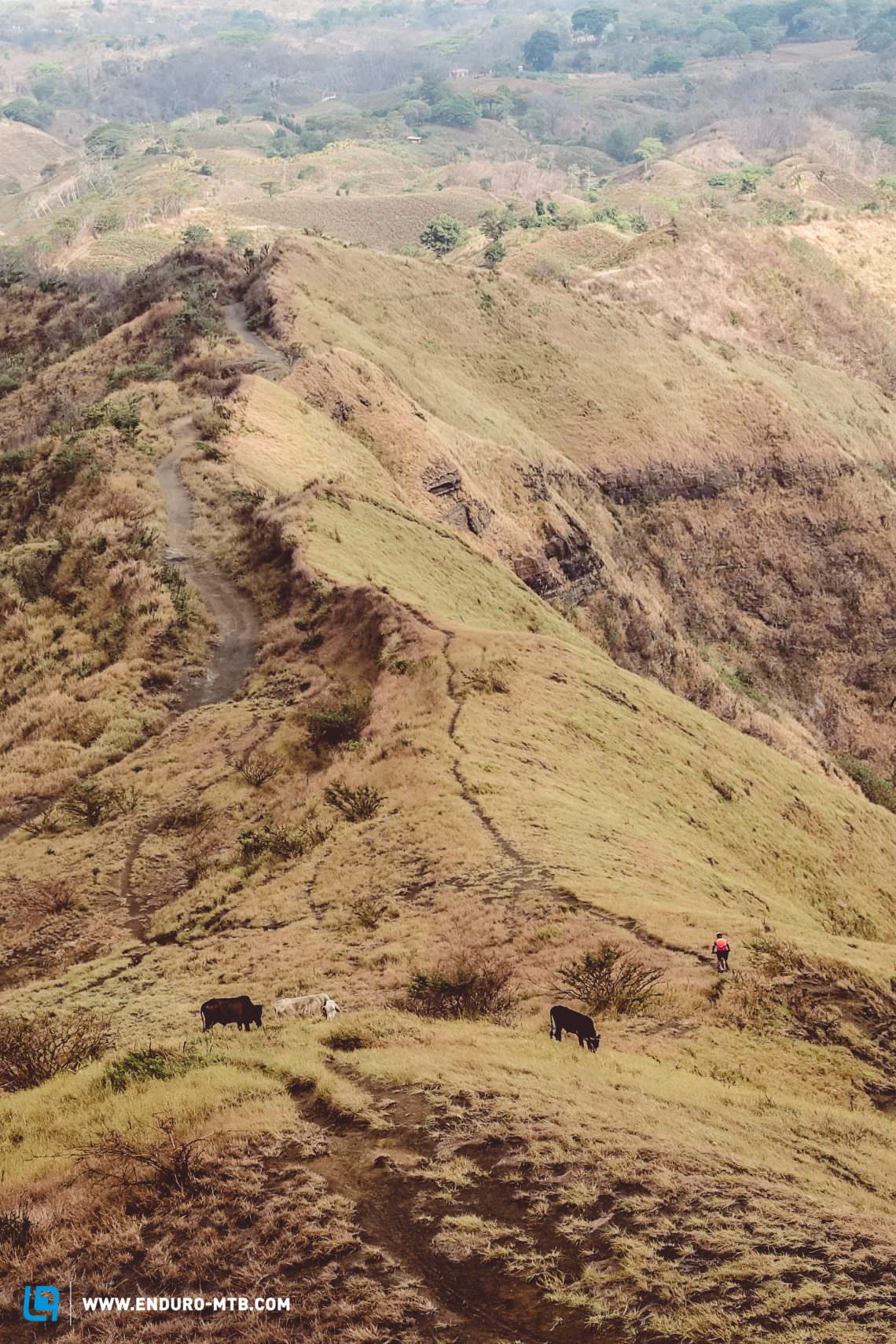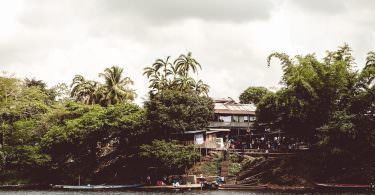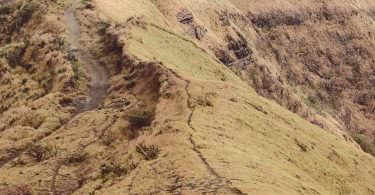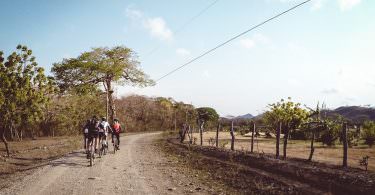630km doesn’t sound like a whole lot. A one-day trip by car? No problem at all. With the bike, however, in the dry season of Nicaragua, with an average temperature of 35 °C, as the only girl among 8 guys, it would prove to be a real challenge.
Never before have I toured through a country by bike. On this trip, however, it was my main vehicle, and instead of picking the most astonishing trails while sitting in the gondola, I had to cross enormous distances before I could even reach them. The treat was that I got to experience the land; not through the window of a car, but completely unfiltered. I met schoolchildren who were walking down a dusty road with heavy backpacks on their backs. It was the same road that I took with my bike and we felt the same hot wind that blew the sand in our eyes like a firestorm during the torrid midday heat. Our journey from west to east across the country brought us to regions of Nicaragua that are untouched by tourism, and the sight of a blond girl on a bike between a bunch of guys certainly startled the locals. Moments like these made this trip absolutely unforgettable!
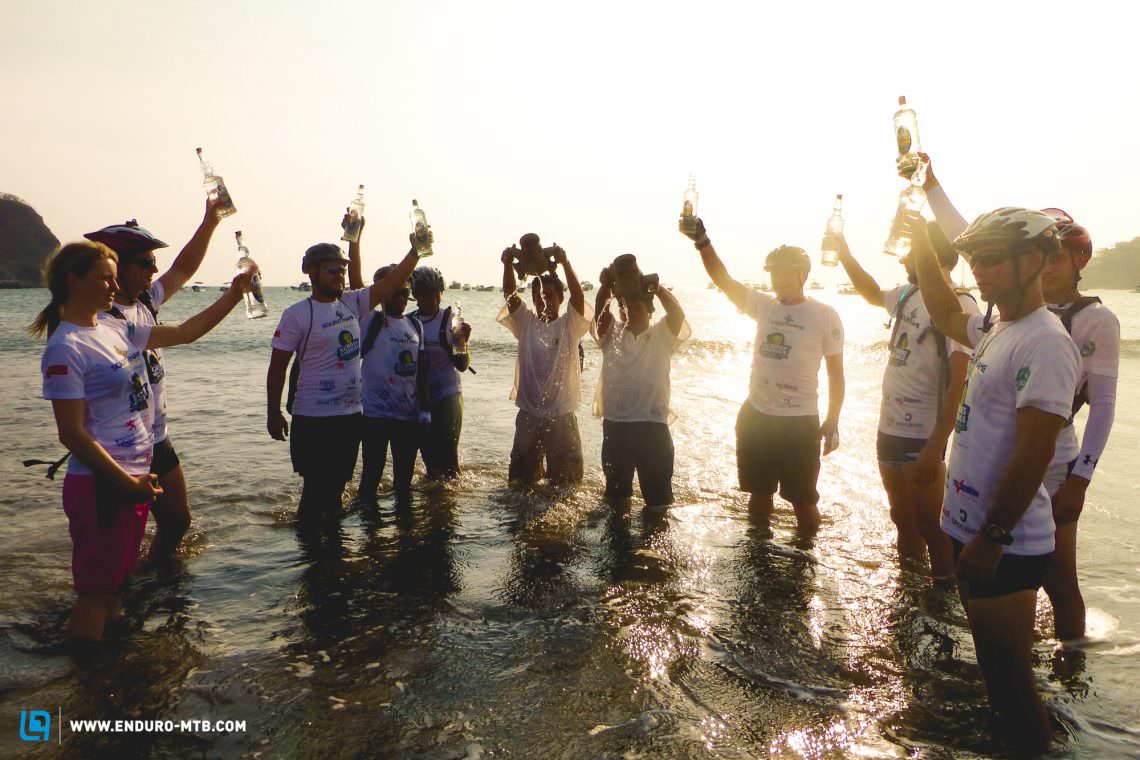
Memories that will last
Physically, those 10 days were the toughest that I have ever experienced. Every day the routine was the same: a 5 o’clock alarm before setting out at 6 and peddling for 7-8 hours – in temperatures soaring above 35 °C. We were mainly on dirt roads and smaller asphalt streets many of which lay in the blazing sun without one single bit of shadow. It was on one of these days that we met our Camino del Diablo – the devil’s highway.
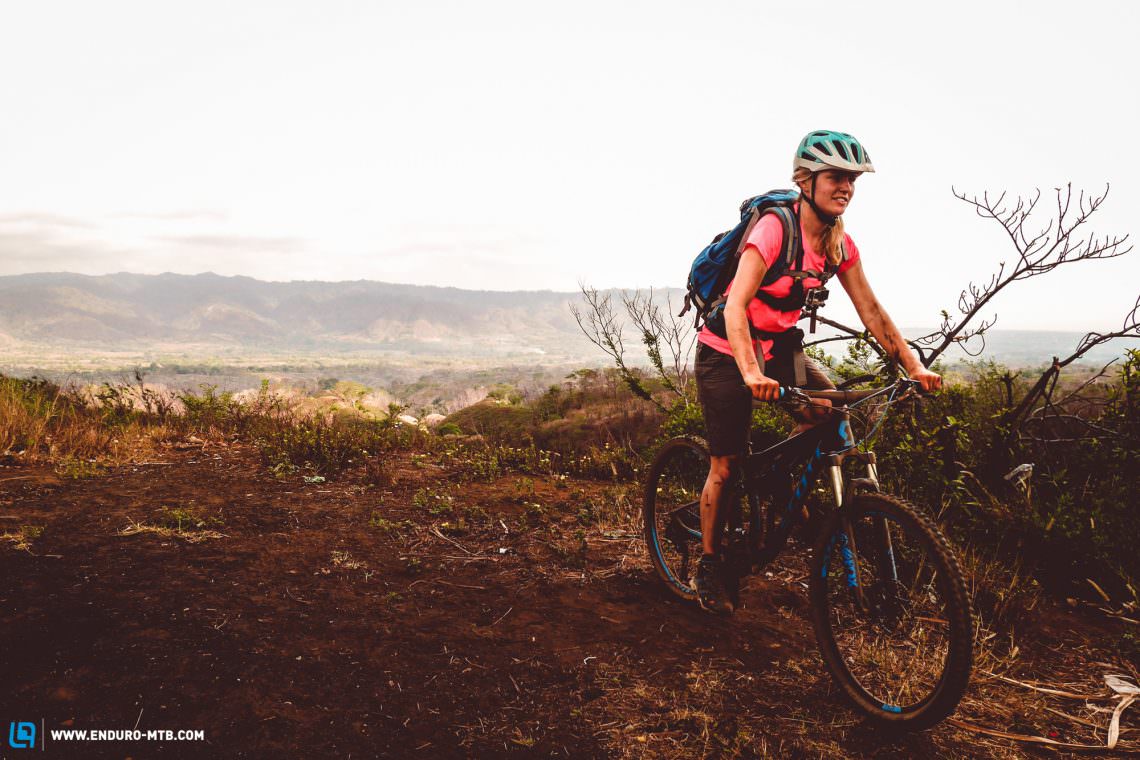
One day we had started out in an idyllic forest where I even got to hold a wild baby monkey in my arms. Soon enough, however, we found ourselves peddling along a dirt road between fields of rice. There was no shelter from the scrutinizing heat of the sun but the final destination of the day was Santo Domingo and in order to reach that, this was the only road . The strong wind blew the hot air right in our faces and I had to force myself not to stop. I developed feelings of hatred against any car driver who passed me in his cool car, with the air conditioning cranked to the max while I was slowly struggling through that hell. The question ‘why I am actually doing this’ crossed my mind more than once. At the end of that street I sank to the ground shaking and crying out of exhaustion, but also with pride because I had somehow made it. Feelings and memories that will last a lifetime.
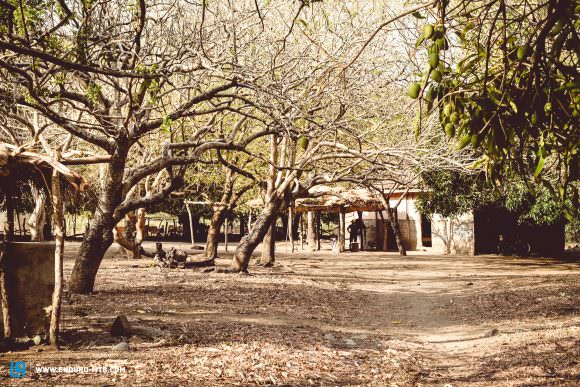
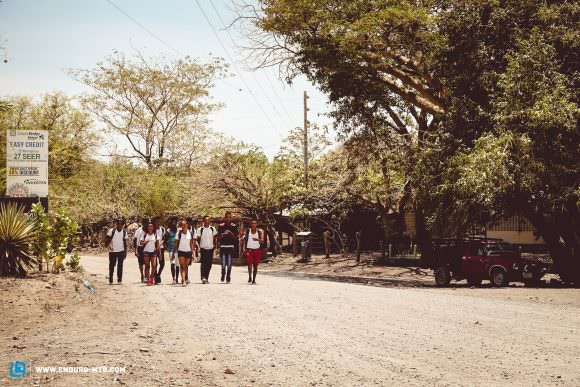
In moments like these, the joy of the day before when we had raced down the astonishing singletrack trails along the crater of an inactive volcano, seemed almost a distant memory. These trails are like a dream come true for any mountain biker and Immanuel, the tour operator, already considers offering only parts of the journey. Instead of doing the whole extreme tour, people could join day trips to the volcano at Masaya and enjoy the effort the national park’s staff have put in the construction of the trails. All of the trails are in perfect shape, allowing us to race along the ridge of the volcano’s crater for kilometres and kilometres.

Mountainbiking is pure luxury in Nicaragua
The greater part of Nicaragua’s population lives below the poverty line. Mountainbiking as a sport does not exist here. The people can’t afford the equipment, plus they don’t have the time in their daily lives to do things for pure entertainment.
Mountain bike tourism is at its beginning and there is still a lack of technical know-how about bikes and the art of shaping trails, as well as trained mountain bike guides. We discovered this the hard way during a little tour to the beach on our second to last day, which ended in a real expedition. We passed a smoldering wildfire, were attacked by sewing grass and had to push and carry our bikes more than riding them. The next day I looked as if I had fallen into a ditch of knives.
The community had promised Immanuel they would prepare the trail, but apparently they didn’t know what it takes to shape a trail so that bikers can ride on it.
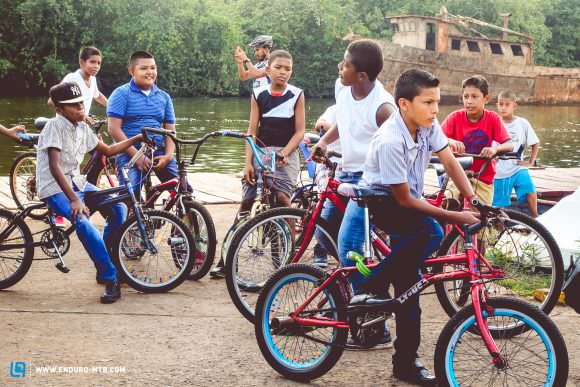
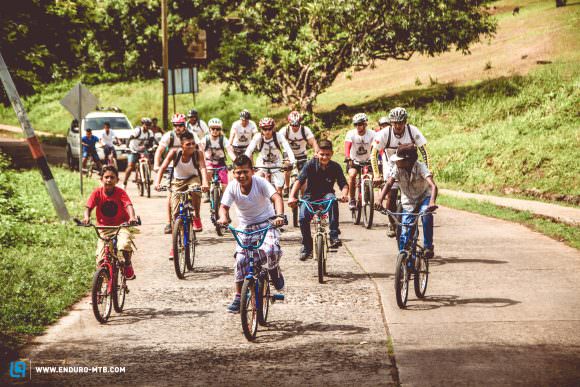
Wild West meets Nicaragua
Being able to explore places that remain hidden to tourists in their air conditioned, all-inclusive hotels was the highlight of this trip. The Nicaraguans are very warmhearted: whenever we passed people, we were greeted with smiles and the children called out to us, waving cheerfully. One memorable day, we explored small trails in the rainforest before arriving at the little town of Campana. All of a sudden we not only felt like we had travelled back 200 years, but also as if we were in a different country. Instead of lines of cars parked on the main road there were many horses bound to wooden posts in front of the little stores. The men raced through the streets on their horses and the fashion-trend was evidently white rubber boots with spurs. The pub could just as well have been a saloon out of a wild west movie: the guys were spitting on the floor, just like hard dudes are supposed to, and they were roaring into the microphone of a karaoke machine. I even danced with a little Nicaraguan man who told me with shining eyes that it has always been his dream to dance with a white woman once in his life – it was probably the craziest place I have ever been.
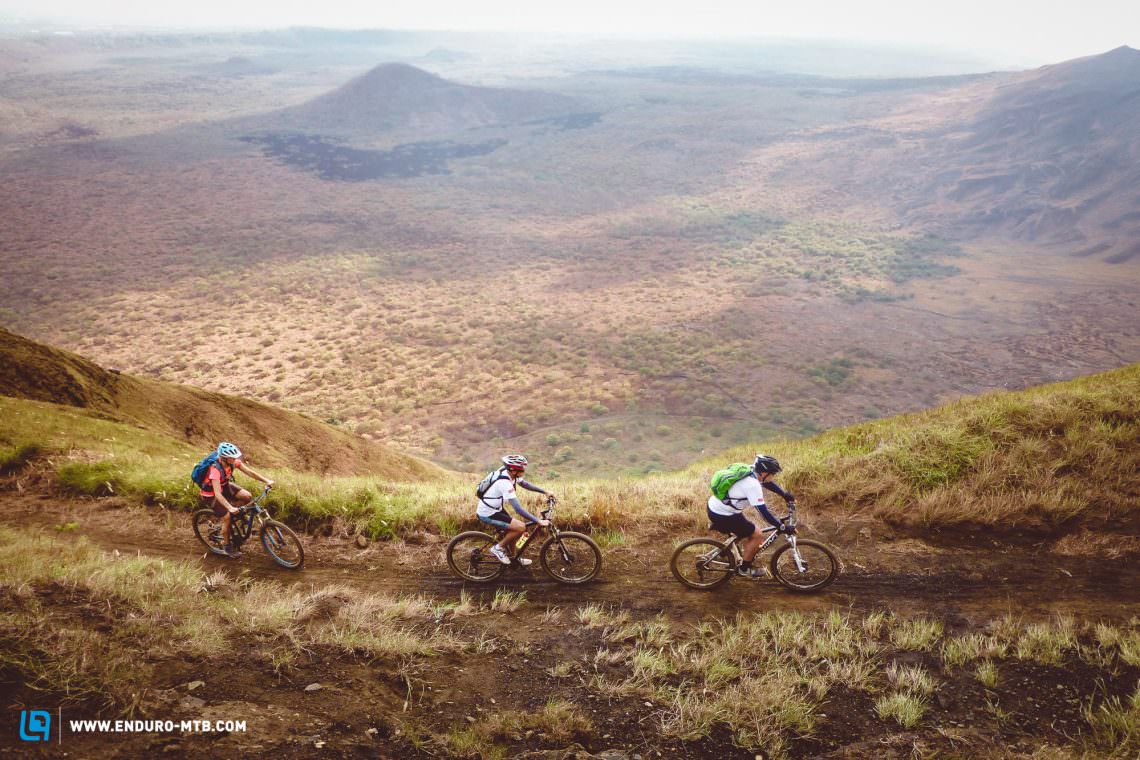
Tourism as an opportunity
More than once we were a real attraction. Journalists bombarded us with questions, we appeared on TV, and we had to take tons of group pictures. Immanunel used the media attention and the extreme character of the trip to raise awareness for the necessity of sustainable tourism. Not only should tourists respect the country they are travelling to, but also Nicaraguans should be encouraged to treat their own country responsibly. Tourism can be a sustainable and clean source of money, even for the country’s poorest farmers who live in the remote mountain areas. To achieve this aim, Immanuel plans his trips so that many people can profit from them. One night we camped on the land of a little farmer who lives with his wife and three children in a very basic house. The whole family shares one bedroom and the bathroom is a little pond behind the house, earning their living with some chicken, pigs and horses that roam freely around the house. Life is hard and they have just enough to get by. It’s these people that Immanuel tries to reach, showing them that tourism can be an alternative way of gaining money.
Sun, beach and happiness
Ten days, 630 km, an average temperature of 35° C, seven hours of biking daily – I was more than happy and full of pride when I reached Laguna de Perlas on the caribbean coast of Nicaragua and we finally celebrated our successful expedition with a well-earned cold can of beer. This place was like a different planet and time seemed to be standing still. We could hear reggae music out of every house and any kind of rush seemed to be non-existent. It was the perfect place to celebrate the end of the trip with our wonderful, diverse group. It was a trip that none of us will ever forget and it left us three foreigners pondering about our own lives. After this experience I came to realize once more how easy my life is in comparison and in what luxury we live in. We are in the lucky position to be able to seriously worry about ways to spend our free time mountain biking is such a privilege it should be all about having a good time with friends and having adventures. Where can we experience that better than on a bike tour through Nicaragua?
[/emaillocker]
Additional Info
How to get there
Nicaragua’s capital is Managua and it has an international airport. It can be reached with a couple of layovers from anywhere around the world.
Guiding
The tour was led by Immanuel and Fredder. Immanuel is the head of Solentiname Tours, a family business that puts its main focus on the promotion of sustainable tourism in Nicaragua.
Hotels
The western region of Nicaragua is well developed for tourism and you can find a whole range of different hotels. For hotels as well as for tour operators, we recommend those certified by the Rainforest Alliance. They promote sustainable tourism and the protection of the rainforest. In the centre and the east of the country, tourism is not very common and most hotels are basic.
Must do’s
The colonial cities of Granada, Leon and Masaya are definitely worth a trip. It might sound rather lame, but when in Nicaragua you should do at least one bird watching tour. With a good guide you get to know more types of birds in only two hours than we Europeans normally see in a lifetime. The vulcanos around Masaya are majestic and amazingly beautiful.
Did you enjoy this article? If so, we would be stoked if you decide to support us with a monthly contribution. By becoming a supporter of ENDURO, you will help secure a sustainable future for high-quality mountain bike journalism. Click here to learn more.
Words: Laura Müller Photos: Laura Müller/Vince Hempsall





